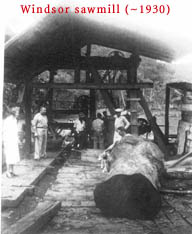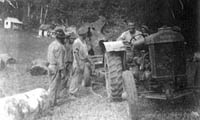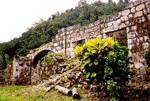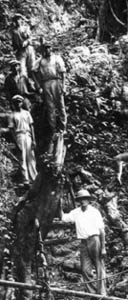1892
|
 |
William James Donald-Hill (WJDH)
married Isabella Edgar in Kintore, Scotland
|
 |
1893
|
 |
Isabel DH born in
Scotland
|
1892/3?
|
WJDH bought Windsor for the first time
|
1893?
|
WJDH and Isabella (wife) travelled to Jamaica, not
necessarily together; Isabella sailed via Colon, Panama
|
1894
|
 |
Mary DH born in
Jamaica
|
1896
|
 |
Helen DH born in
Jamaica
|
1897
|
 |
Alice DH born in
Jamaica
|
1898
|
 |
Barbara DH born in
Jamaica
|
|
?
|
Sold Windsor, perhaps to a Dr.Dewar, and moved back to
Scotland
|
1904
|
 |
WFDH ( mas Willy ) born in Elgin,
Scotland
|
?
|
WJDH bought Windsor for the second
time and moved family back to Jamaica
|
1920
|
 |
Visit by biologist (Harold
Anthony)from American Museum of Natural History; field notes state
" ..the ticks are terrible and the mosquitoes only a little less
bad"
|
1927
|
WJDH died in Jamaica, buried at
Scots Church, Hampden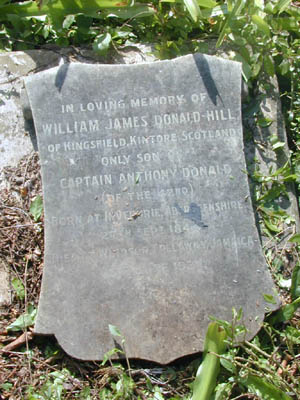
IN LOVING MEMORY OF
WILLIAM JAMES DONALD-HILL
OF KINGSFIELD, KINTORE, SCOTLAND.
ONLY SON OF
CAPTAIN ANTHONY DONALD
(OF THE 42ND)
BORN AT INVERURIE, ABERDEENSHIRE
27TH SEPT 1844
DIED AT WINDSOR, TRELAWNY, JAMAICA
16TH JUNE 1927
|
1927
|
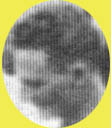 |
WFDH returned from the Morris Motor
Works, Scotland ? where he was an apprentice mechanic/engineer to
manage Windsor Estates
|
1942
|
 |
WFDH married Joan E Blake in
Kingston, Jamaica
|
1942
|
 |
Bungalow ("The Little House") built
by WFDH on common, near large cotton tree, north of Great
House
|
1942
|
 |
CWDH ( Bill ) born in
Falmouth
|
1944
|
 |
JIDH ( Joan ) born in
Falmouth
|
1948
|
 |
RFDH ( Richard ) born in
Falmouth
|
1948?
|
|
Windsor sold by Isabella DH to
Miriam Rothschild, scientist, married to Colonel George
Lane
|
1948?
|
|
The DH family moved to " Leuchars
", Half Way Tree, Kingston, but WFDH remained to manage the
property
|
1948?
|
Windsor Great House completely
renovated inside, with new flush toilets added upstairs,a large
net-enclosed verandah built at the back of the house on the second
floor with stone steps to the ground. The road which went through
the gates at the front of the house was diverted to the east side
and the gates were moved to the east side. The green, wooden
jalousies which cooled the large front living room were removed and
replaced with venetian blinds ?
|
1951
|
 |
LHDH (Lindsay) born in
Falmouth
|
1953?
|
|
Search and rescue of Mr. ? Stone,
biochemist, Imperial Tobacco, an experienced spelunker from Wales,
who was missing in the Windsor Caves for many hours
|
1953?
|
|
WFDH and family moved from the
bungalow to the Great House
|
1953?
|
|
Windsor sold to Kaiser
Bauxite
The end of the association between the
DH's and Windsor property
|
1956
|
Isabella died and was buried next
to her husband at Scots Church.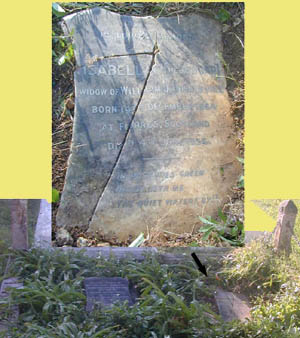
IN LOVING MEMORY
OF
ISABELLA [NEE EDGAR]
WIDOW OF WILIAM J.
DONALD-HILL
BORN 14TH DECEMBER 1864
AT FORRES, SCOTLAND
DIED 4TH JUNE 1956
--------
'IN PASTURES GREEN
HE LEADETH ME
THE QUIET WATERS BY!'
|
1956
|
 |
WFDH and family moved to Claremont,
Jamaica
|


















